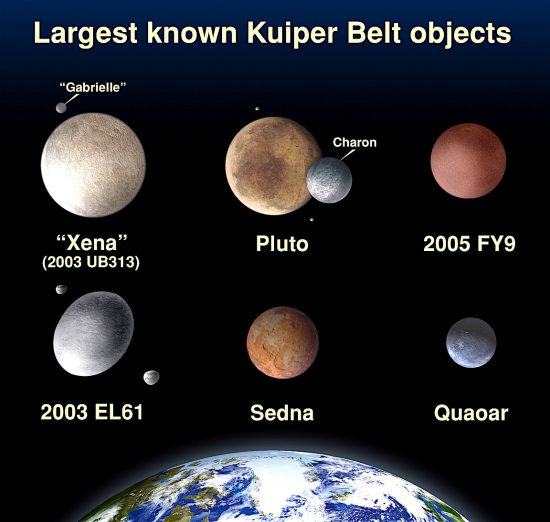Feb 28, 2017
Colorful planets are the result of plasma cosmogony.
Immanuel Kant’s theorized that the Solar System was born from a dusty cloud of gas, or nebula, floating in space. His idea is now known as the “Nebular Hypothesis.” Kant suggested that the cloud contracted because gravity drew its particles together into clumps. As they grew, the clumps became more attractive, finally accumulating into a mass. The gravitational force became so strong that it compressed the mass into a hot ball, rotating with the cloud’s original angular momentum. It gathered more and more matter until a nuclear fusion reaction ignited it, giving birth to the Sun and a structure called an “accretion disk” circling its equatorial plane.
The accretion disk is said to have extended beyond the orbit of Neptune. As the theory states, eddies of matter formed in the spinning ring of dust and gas. Those eddies grew larger, slowly sucking in more and more particles until hundreds of millions of impacts gradually formed the planets. The Kuiper Belt, as well as the theoretical “Oort Cloud,” are supposed to be “holding areas” for the remaining material that did not condense into planets (or dwarf planets).
The Kuiper Belt theory, used to explain the orbits of distant objects, was developed by Kenneth Edgeworth, an astronomer from Ireland, and also (separately) by American astronomer Gerard Kuiper in 1951. The first Kuiper Belt Object (KBO) was discovered in 1992, and is commonly referred to as “QB1”. Originally, QB1 was to be named “Smiley”, but it was already taken. Dozens of KBOs the size of moon-sized planets are discovered every year. Other KBOs include the dwarf planet, Eris, as well as over 70,000 “Trans-Neptunian Objects”.
Dwarf planets are considered to be a unique category: there are most likely hundreds of them in orbit beyond Pluto. The largest include such bodies as Ceres, Pluto, Charon (Pluto’s largest moon), Makemake, Varuna, Xena, Haumea, Quaoar, Orcus, Sedna, Snow White, Ixion, and Hyua. Many more are not named but are identified by number.
The Nebular Hypothesis is not an illogical theory, despite its age. Given uniformitarian parameters, it stands to reason that what is visible today is an ancient construct from the deep past. In order to create an alternate theory of the Solar System, especially a new theory of planetary evolution, it is necessary to first assume different engines of change and a more rapid morphology.
Theories put forth by Electric Universe physicists are couched in those unique assumptions. At the outset it must be made clear that catastrophic evolution cannot be merged with gradualism. If the Solar System is a four-billion-year-old antique, then there is no way for a hypothesis that calls for recent cataclysms to coexist. A new way of seeing the Universe must first be adopted.
A recent press release announced that 2007 OR10 is the largest celestial body in the Solar System without a name and the third largest dwarf planet: 1535 kilometers in diameter. The next largest dwarf planet is Makemake, while Haumea, although larger on its long axis, is smaller in volume. By comparison, Ceres, currently being studied by the Dawn spacecraft, is 950 kilometers wide. One of the more interesting aspects of the new discovery is 2007 OR10’s deep red color.
An unusual characteristic of various dwarf planets is that all of them are colorful. Snow White, contrary to its name, is reddish in color like its sister, Haumea, and now 2007 OR10. As an aside, Pluto is brownish-yellow, while Eris is green.
In a plasma cosmogony hypothesis, the stars are formed when cosmic Birkeland currents twist around one another, creating z-pinch regions that compress the plasma into a solid. Laboratory experiments have shown that such compression zones are the most likely candidates for star formation and not collapsing nebulae.
A previous Picture of the Day noted that another class of Solar System object called “centaurs” are also colorful: reddish-brown, blue, green, and brownish-yellow. As suggested by this writer, centaur objects could be colored because they were ejected by gas giant planets; their colors corresponding to the colors of their parents. 2007 OR10 most likely appertains to that phenomenon.
Stephen Smith













